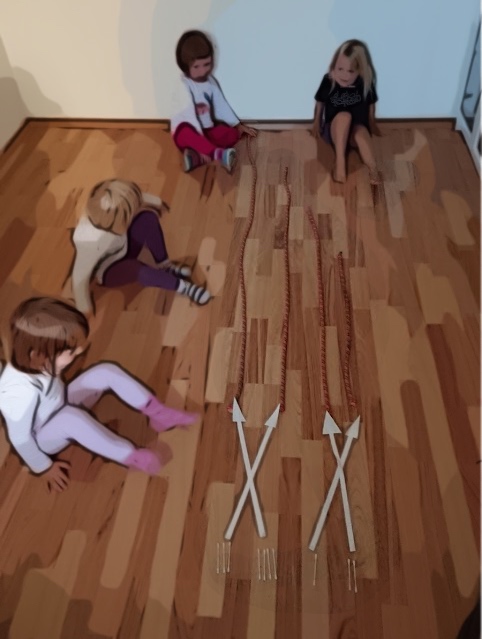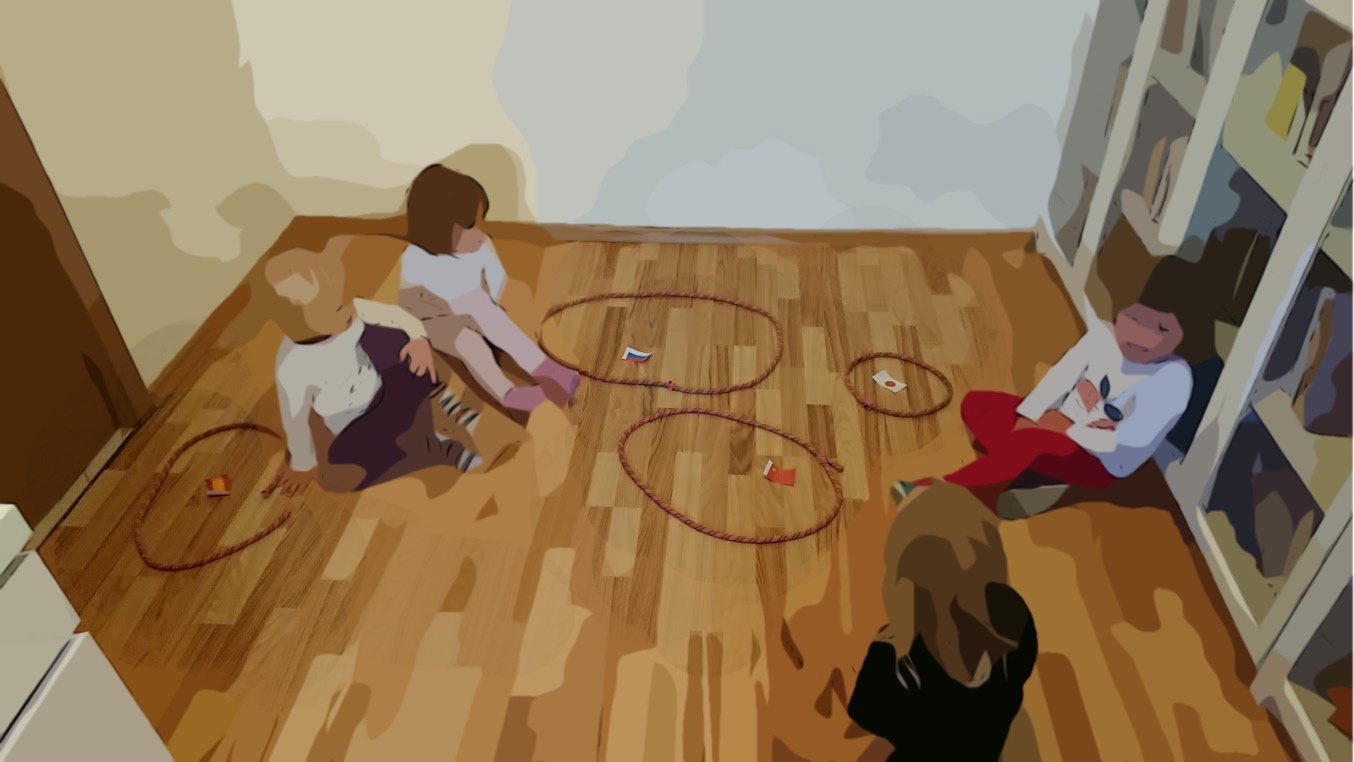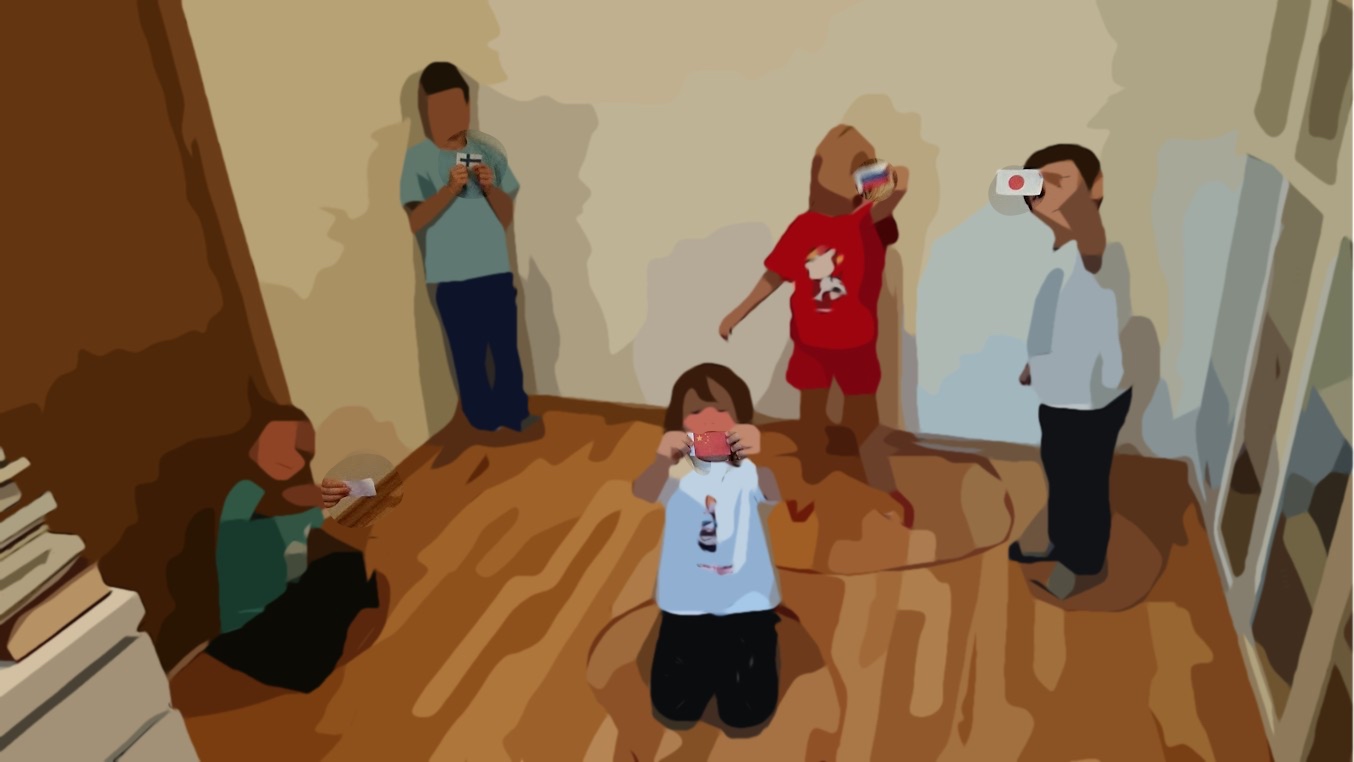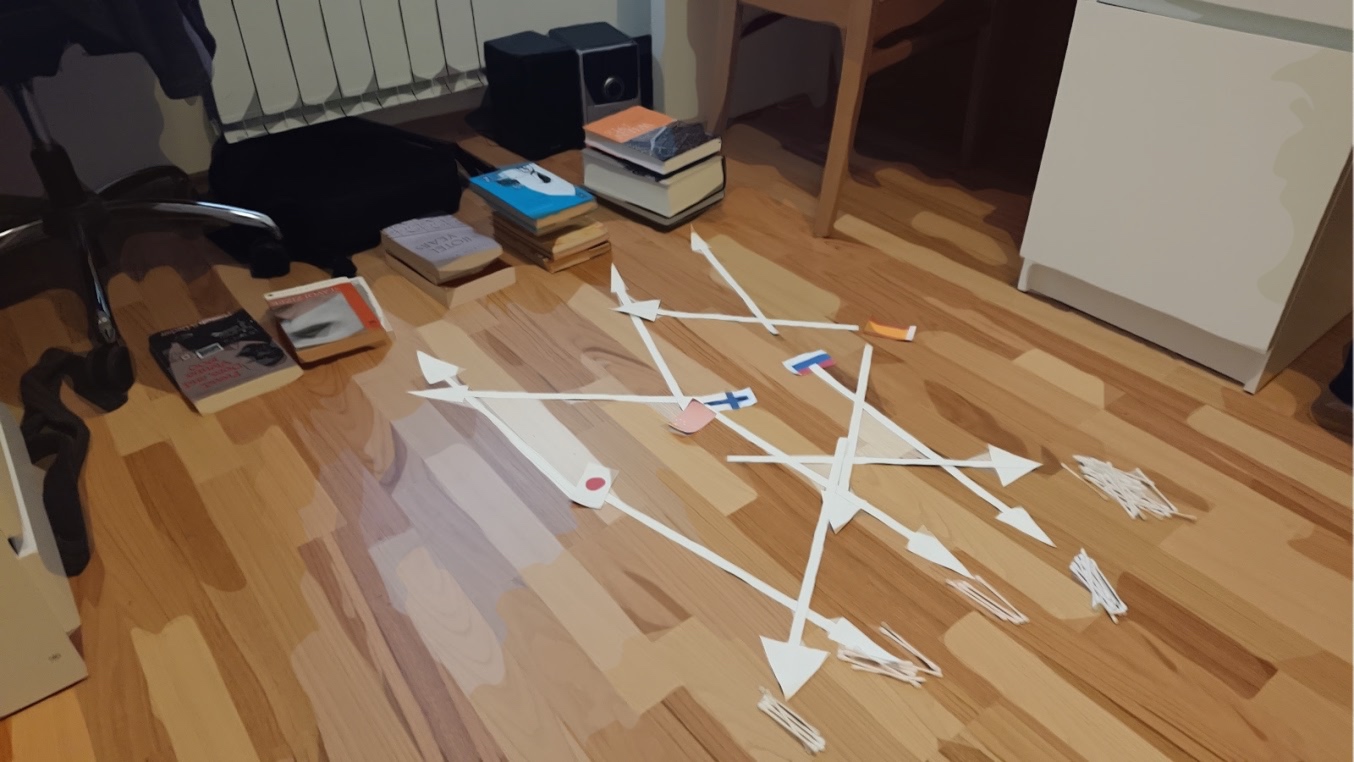The first Math Circle didn’t go as badly as Vera likes to say. She is not to be blamed, though. The stampede that happened after kids had jumped out of their parents’ cars and charged into our house was quite unforgettable.
Despite the running and screaming, it was somehow manageable. But I realized we needed two groups. The differences between the kids were just too big. Marko, who was almost eight, and Vesna, at three years of age, were simply worlds apart. I should have known that beforehand.
You could see how the bigger kids found it silly to do the same exercises as three-year-olds. We needed two groups!
For the second Math Circle, we had one group with four three-year-old girls: Jana, Vesna, Meta and Andreja. And another group with Marko, who was seven, Rebeka, who was six, and three five-year-olds, Bojan, Gregor and Lara.
Epsilons
Epsilons was the name I started using for the first group. This was the name that Paul Erdős was using for kids.
Who is Paul Erdős? If you don’t know, I highly recommend his biography The Man Who Loved Only Numbers.
Erdős was a tremendous mathematician, and contrary to what the title says, he didn’t love only numbers. He was an eccentric person, yet very warm. Among many other peculiarities, he had his own vocabulary. For example, children were "epsilons" because an arbitrarily small positive quantity in mathematics is often denoted by the Greek letter ε. Furthermore, for Erdős, people who stopped doing mathematics had "died", and people who died had "left". Mathematical lectures were "sermons".
I love Erdős for his kind nature, his eccentricities, and his unrivaled passion for mathematics, which he kept alive to the very end.
Thus, Epsilons. Two girls joined today for the first time – Meta and Andreja. We repeated the exercise from the last time. Meta and Andreja got a triangle and were asked to draw something of their choice in it. Then we switched to functions. Yeah, you heard that right. Only the concept of functions, though. But of course, Vera later said I was totally out of my mind.
In any case, I presented a function that maps cotton swabs to pieces of rope of different lengths. The more swabs there are, the longer the piece of rope.

The next function demonstrated the connection between shapes and the girls. The girls were standing in a row, their shapes in another row, arrows in between.
I asked them, what else could be a function? They were quiet (of course they were, said Vera later). I proposed a function that tells how old we are. So, we formed three sets of cotton swabs – one with two swabs, one with three swabs, and one with four swabs. Since all girls are three years old, all the arrows pointed to the set of three swabs.
To relax the atmosphere a little bit, I switched on the computer, and we listened to how to say hello in different languages. Each girl got a new temporary citizenship. They became citizens of China, Japan, Russia, and Spain. We repeated the words as we heard them from the computer. Sure enough, this was a hundred times more interesting than functions.

Before the meeting, I’d made flags of the four countries, and now I distributed them among the girls. Using pieces of rope, we drew the countries on the floor. Russia as the biggest, then China, Japan, and Spain. I wanted to introduce some functions here, as well, but we ran out of time. Vera came and said her grandsons were waiting for Deltas to begin.
Deltas
If the group of smaller kids had a name, the bigger kids had to have a name too. I wasn’t very original – Deltas it was.
We did similar things as with Epsilons. There were five kids, so we had five countries – Russia, China, Spain, Japan, and Finland. But we first learned how to say hello. Somehow surprisingly, it caused more problems than in the first group.

We then drew the countries on the floor. Marko, the oldest, incidentally got Finland, the smallest country, and was very unhappy about it. I realized I needed to be careful with such things in the future.
We continued by adding swabs to each country – the number of swabs representing the country’s population size.
Then, we built stacks of books for each country – the bigger the country, the higher the number of books. We came up with a function mapping the countries and their sizes in terms of area.

Finally, we added a function representing the population sizes.
Note that the order goes as follows:
Area: Russia, China, Spain, Japan, Finland.
Population: China, Russia, Japan, Spain, Finland.

I asked how come there are more people in China although Russia is bigger. Contrary to what I expected, it didn’t seem strange to them. Of course, it isn’t. And it appeared to be utterly boring when I tried to explain that the swabs representing the population were more densely laid out in China than in Russia. We concluded the circle; it was time to play. A stampede out of my room followed.
from Hacker News https://ift.tt/PirSg3C
No comments:
Post a Comment
Note: Only a member of this blog may post a comment.